History
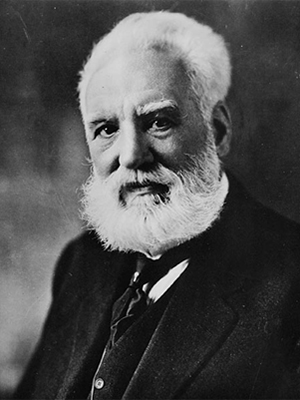 Alexander Graham Bell, his parents and sister-in-law came to Canada from Scotland and England in August of 1870 and settled on a small farm just outside of Brantford, Ontario. This would be their first Canadian home. Alexander was then 23 years old and sick. His parents were afraid he had a lung infection known as Tuberculosis. His brothers had died from the same illness. The Bells hoped that the clean air of Canada would help him to get well. After eight months on the farm, Alexander was well again and offered a teaching job at the Boston School for the Deaf in the United States. He would come back to Brantford to spend the summers and holidays with his family. On July 26, 1874 he invented the telephone here. The next summer, he wrote the first copy of his telephone patent plans. And, in August, 1876 he made the world's first successful long-distance telephone call between Brantford and Paris, Ontario. Because all of this happened here, Brantford became known as “The Telephone City”.
Alexander Graham Bell, his parents and sister-in-law came to Canada from Scotland and England in August of 1870 and settled on a small farm just outside of Brantford, Ontario. This would be their first Canadian home. Alexander was then 23 years old and sick. His parents were afraid he had a lung infection known as Tuberculosis. His brothers had died from the same illness. The Bells hoped that the clean air of Canada would help him to get well. After eight months on the farm, Alexander was well again and offered a teaching job at the Boston School for the Deaf in the United States. He would come back to Brantford to spend the summers and holidays with his family. On July 26, 1874 he invented the telephone here. The next summer, he wrote the first copy of his telephone patent plans. And, in August, 1876 he made the world's first successful long-distance telephone call between Brantford and Paris, Ontario. Because all of this happened here, Brantford became known as “The Telephone City”.
In 1881, the Bells sold the farm and moved to Washington D.C. From this time until 1909, their home, or the Bell Homestead as it became known, had six other owners. The Homestead was donated in 1909 to the Brantford Parks Department so that it could be opened to the public as a parkland and museum. Today, the Homestead looks very much like it did when the Bells lived here, with their original furniture, belongings, and models of Alexander Graham Bell's first telephones.
After Alexander Graham Bell invented the telephone, his father, Melville, and a close friend, Reverend Henderson, started the Bell Telephone Company in Brantford in 1877. The first telephone office was in Reverend Henderson's home. The two men ran the company until 1880. Today, the Henderson Home is next door to the Homestead, with the original telephone office and other telephone displays for visitors to see.
Queen Elizabeth II declared the Bell Homestead a Canadian National Historic Site on June 28, 1997.
Fun Facts for the 150th Anniversary of the Telephone
| Fun Fact: Every Sound is a Vibration |
|
Encouraged by his father to solve problems, not complain about them, an 11-year old Aleck discovered a means by which he could talk to his deaf mother without the use of her hearing trumpet. Placing his lips against her forehead and speaking in his normal voice, Eliza Bell could understand what her son was saying. From this, Aleck learned that every sound is a vibration. The more he learned brought him to the conclusion that those with hearing loss could be taught how to speak. It also sparked Aleck’s interest in telegraphy and the quest for a “speaking telegraph”. Photo caption: Eliza Bell holding her hearing trumpet.
|
| Fun Fact: From Edinburgh to Brantford |
|
In 1870 at age 23, Alexander Graham Bell left Scotland for Canada with his parents in the hope that the change in climate would restore his failing health. While resting at his parent’s new home in Brantford, Ontario, he continued his research in electricity. Quite recovered by the next spring, Bell accepted a teaching position at the Boston School for the Deaf, living there through the school year and returning to Brantford for the summers. Photo caption: The Bell Family at their home in Brantford, 1870s
|
| Fun Fact: The Telephone is Invented! |
|
On July 26th, 1874, at his parent’s home at Tutelo Heights – now known as the Bell Homestead – the young Alexander Graham Bell sat in the dale, in a spot he called his “dreaming place”, and pondered the quest for a “speaking telegraph”. As he stared down at the Grand River, inspiration struck: Bell grasped the principle on which his most famous invention, the telephone, would work. The telephone had been invented! Photo caption: Alexander Graham Bell's first telephone known as the Gallows Frame
|
| Fun Fact: The First Telephone Patent |
|
Home for the summer of 1875, Bell spent his time writing the patent specifications for his telephone. His patent application was submitted to the United States Patent Office the following February and on March 7, 1876 he received his first of many patents for his revolutionary new invention. United States Patent 174465 became the most valuable patent ever issued. Photo caption: Drawing of the telephone in Alexander Graham Bell's Patent
|
| Fun Fact: The First Long-Distance Telephone Call |
|
Returning to his family home in Brantford in 1876, Aleck mounted three tests of the telephone on telegraph wires. The first test, transmitted from Brantford to Mt. Pleasant, Ontario, would be the first telephone call between two communities. The following day, using the Brantford to Mt. Pleasant line once again and a quarter mile of wire strung from the Bell’s home to the Mt. Pleasant Road, Aleck transmitted music and song from the Brantford telegraph office to guests at his home. Finally on August 10th, Aleck tested his telephone on a line between Brantford and Paris, Ontario. This public demonstration proved that the telephone was a practical form of communication and became the world’s first successful long-distance telephone call. Photo caption: An artist’s depiction of Alexander Graham Bell receiving the world's first successful long-distance telephone call in Paris, Ontario, 1876
|
| Fun Fact: Starting a Telephone Company in Canada |
|
Bell received the Canadian patent for the telephone on August 22, 1877. He gave his father, Alexander Melville Bell, 75% of this patent in order that he could start a telephone company here. In partnership with his friend, Thomas Henderson, Melville Bell established Canada’s first telephone business office in Reverend Henderson’s home on Sheridan Street in Brantford. The two men would manage the Bell Telephone Company of Canada here until 1880. Photo caption: Canada's first telephone business office was opened in this house on Sheridan Street in Brantford in 1877
|
| Fun Fact: The Bell Telephone Company of Canada |
|
Wishing to retire, Melville Bell sells his Canadian telephone patent rights to the National Bell Telephone Company of Boston. National Bell sends Charles Fleetford Sise to Canada to organize a Canadian telephone company. The Bell Telephone Company of Canada is incorporated by Federal charter on April 29, 1880. 144 years later, that same company continues with the inventor’s name – Bell. Photo caption (left image): The first logo of the Bell Telephone Company of Canada, 1880 Photo caption (right image): The present-day logo of The Bell Telephone Company of Canada or Bell
|
| Fun Fact: A Telephone in Every Home |
|
By 1880, the telephone hand evolved from a wooden box with a hole that acted as both transmitter and receiver, to the Blake Magneto wall set. The phone consisted of three boxes mounted on a backboard. The top box contained the bells and the magneto generator used to signal the operator. In the middle was the transmitter, while the bottom box housed a battery. The receiver hangs on a hook on the side of the magneto. Photo caption: The Blake Magneto Telephone of 1880
|
| Fun Fact: What is Brantford’s Official Flower? |
|
The most popular telephone of the 1910s was the “Daffodil” telephone, so named for its resemblance to the flower. The City of Brantford adopted the Daffodil as it’s official flower as a result of this telephone model. Photo caption: The Daffodil Telephone
|
| Fun Fact: The Telephone City |
|
Proud of the world-changing discovery that Alexander Graham Bell had made in Brantford in 1874, “The Telephone City” as it had become known, celebrated the telephone and the inventor with the unveiling of the Bell Memorial in 1917. Designed by renowned sculptor, Walter Seymour Allward, the memorial speaks to Bell’s achievement in conquering the quest by humanity to communicate over long distances. Photo caption: Alexander Graham Bell standing before the newly-unveiled Bell Memorial, 1917
|
| Fun Fact: “Hello, Operator?” |
|
In 1924, the first dial telephones were introduced in Canada. However it would take another 30 years before direct dial would be widely introduced as most people were happy to have their operator connect their calls. Photo caption: The 50-Type dial telephone was introduced in 1924
|
| Fun Fact: All in one Hand |
|
Before the end of the 1920s, both the transmitter and receiver of the telephone were combined into one handset. Photo caption: The 202-Type telephone was the first to have a combination handset.
|
| Fun Fact: Everything in one Place |
|
By the 1930s, a great innovation was introduced with the 302-Type telephone in which the call bells were hidden in the base. Previously the bells were located in a separate box usually mounted on the wall. Photo caption: The 302-Type telephone was popular through the 1950s.
|
| Fun Fact: “Will it match my Décor?” |
|
78 years after the telephone was invented, the model that found its way into North American homes for upwards of 30 years was introduced. The 500-Type was the first telephone to be encased in moulded plastic, allowing it to be produced in a wide-range of colours. For many people, it was important that the telephone match the décor! Photo caption: The 500-Type Telephone
|
| Fun Fact: At the Touch of a Button |
|
The 1960s brought then next big advancement in telephone technology – Touch-Tone Service. The 2500-Type telephone replaced the dial with push buttons. Photo caption: The 2500-Type Telephone introduced Touch-Tone Service for the first time.
|
| Fun Fact: Truly Canadian |
|
Designed and produced in Canada, the handset in the Comtempra phone of 1968 had everything to make a call – including a “recall” button which made it possible to dial another call without hanging up. The Contempra model was available with either dial or Touch-Tone service. Photo caption: With the Contempra phone, everything needed to make a call was in the handset.
|
| Fun Fact: Landline Phones Go Digital |
The beginning of the digital age saw the telephone take on brand new technology with the entire works in a circuit board. The Harmony Model was introduced in 1983 and with the absence of heavy call bells, required weights be placed inside the phone to help prevent it from moving when the handset was lifted. Landline telephone technology has not changed drastically since this model was introduced.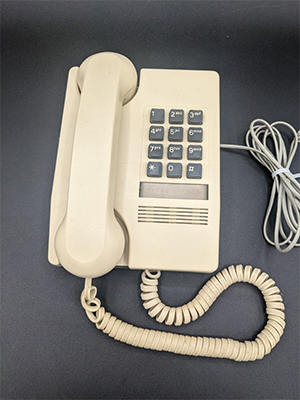 |







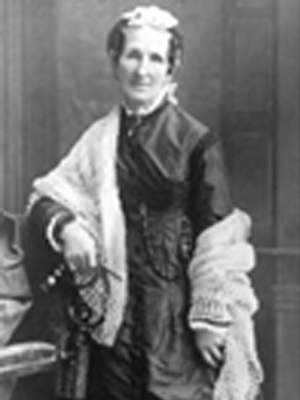
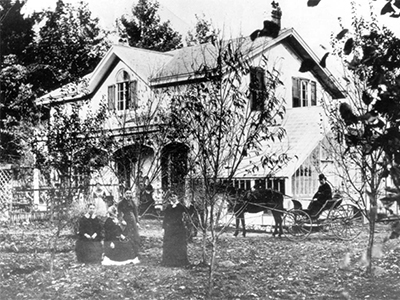
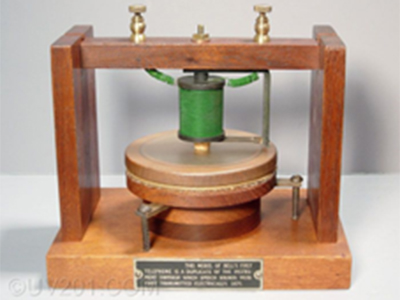
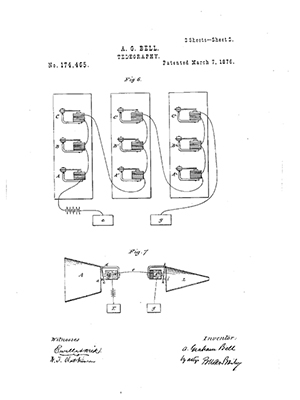
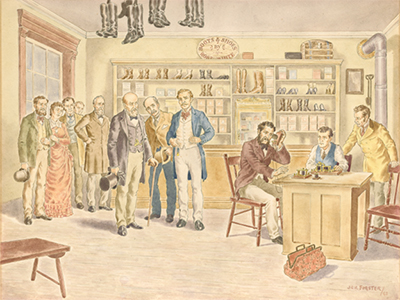
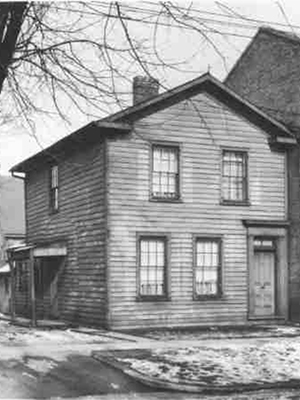
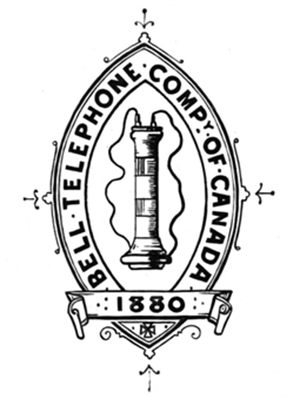

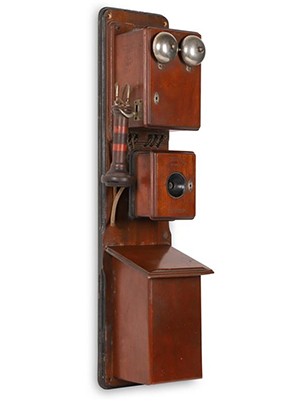
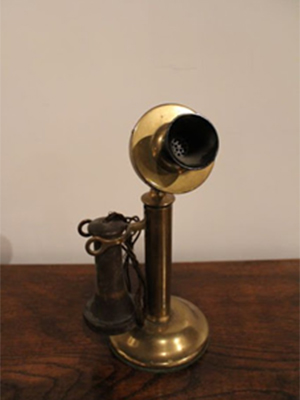
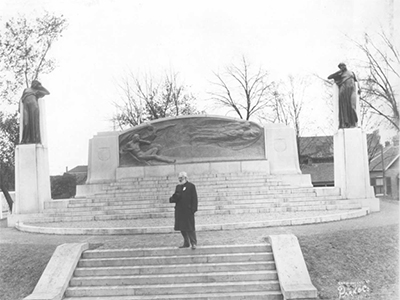
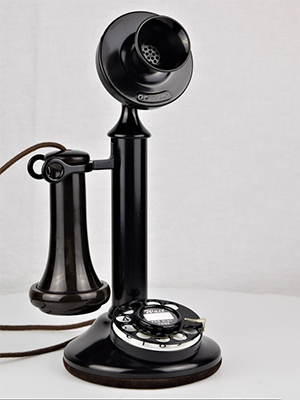
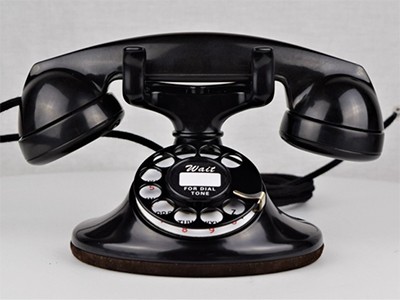
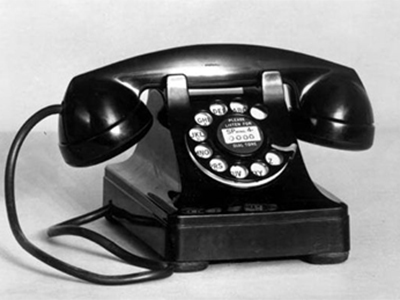
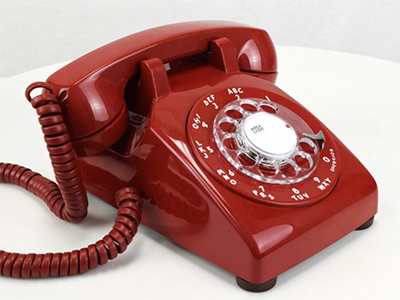
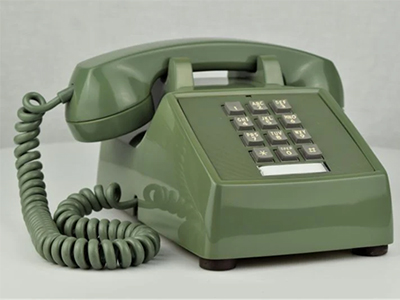
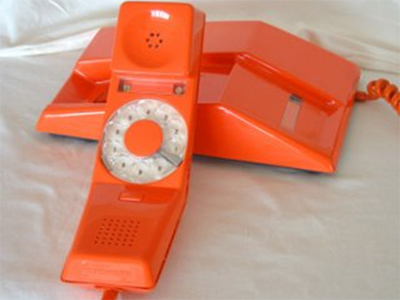

 Subscribe to this Page
Subscribe to this Page